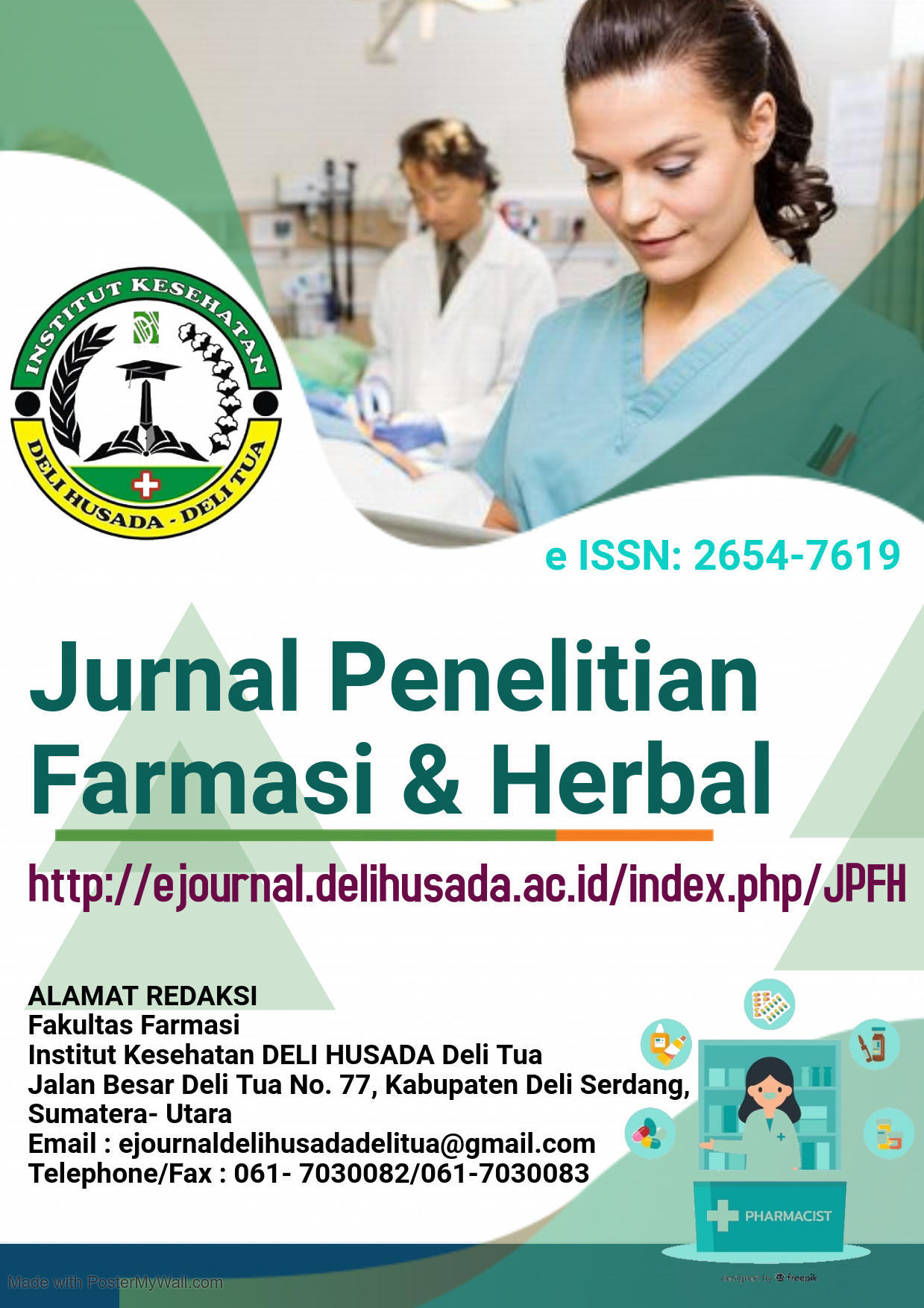FORMULASI KRIM PEWARNA RAMBUT EKSTRAK ETANOL DAUN HATI UNGU (Tradescantia pallida)
Abstract
Hati ungu contain natural dyes derived from anthocyanins. Anthocyanin is a pigment that is classified into flavonoids which in general gives a specific color to plants. The natural color found in this purple liver plant can be used as a natural coloring agent in cosmetics. Hair dye cream preparations were chosen because they are popular and easy to use. The purpose of this study is to determine ethanol extracts of hati ungu can be made as a preparation for hair dye creams, and which formula gives the best color. The research method was carried out including making ethanol extract of hati ungu (Tradescantia pallida) by maceration using 96% ethanol.The results of research on 4 hair dye cream formulations, preparations met the test requirements. The results of the basting test on hair with a vulnerable time for 1-4 hours showed that at the fourth hour the results of hair coloring give a good color. In the color stability test of washing, after washing with shampoo fifteen times all four formulas have a fixed color up to 9 times washing. The results of color stability to sunlight show that after the hair is exposed to sunlight the color looks slightly changed, hair color becomes darker than before. From the results of the research the concentration of ethanol extract of hati ungu which gives the best purple color is ethanol extract cream of hati ungu 20%.
Downloads
References
Ditjen Pom. (1979). Farmakope Indonesia. Edisi Ke-Tiga. Jakarta: Departemen Kesehatan Ri. Hal. 33
Ditjen Pom. (1979). Farmakope Indonesia. Edisi Ke-Tiga. Jakarta: Departemen Kesehatan Ri. Hal. 33
Ditjen POM. (1985). Formularium Kosmetika Indonesia. Jakarta: Departemen Kesehatan RI. Hal. 208 - 219, 83 - 86, 96, 105.
Ditjen POM. (1995). Farmakope Indonesia. Edisi Ke-empat. Jakarta: DepartemenKesehatan RI. Hal. 1192-1193, 1199.
Koswara. (2009). Pewarna Alami: Produksi dan Penggunaannya. e-book pangan.
Masturi, Dkk. (2016) Pengaruh Pewarnaan Terhadap Kelunturan Warna Rambut Menggunakan Pewarna Alami Limbah Biji Pepaya Terhadap Pencuciaan. Universitas Negri Semarang. Vol 5.
Nelvita Mei, Dkk. (2016). Uji Kadar Betasianin Pada Buah Bit ( Beta Vulgaris L) Dengan Pelarut Etanol Dan Pengembangannya Sebagai Sumber Belajar Biologi. Universitas Muhammadiyah Malang. Vol 2
Paryanto dan Hans A.P. (2015). Zat Warna Dari Getah Tangkai Daun Pisang(Musa SSP). Ekuilibrium. 14(02): Halaman 40-41.
Ulfha Maria,Dkk. (2017). Formulasi Pewarna Rambut Dari Biji Pepaya (Carica papaya L.) Dalam Bentuk Sediaan Gel. Sekola Tinggi Farmasi Bandung. Vol 1 (2)







